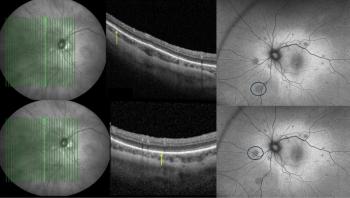
Periocular injection a feasible route for CNV treatment
The size and binding characteristics of proteins are likely to influence their ability to penetrate the eye from the periocular space, but in general, proteins as large as 50-75 kDa penetrate well into the choroid but not into the retina.
The size and binding characteristics of proteins are likely to influence their ability to penetrate the eye from the periocular space, but in general, proteins as large as 50-75 kDa penetrate well into the choroid but not into the retina, according to a report published in the February issue of the Journal of Ocular Pharmacology and Therapeutics.
Anna Demetriades and colleagues from the John Hopkins University, School of Medicine, Baltimore, US conducted a study to investigate the penetration of various proteins into a mouse eye after a periocular injection of the protein or an adenoviral vector (Ad) expressing the protein.
Following a periocular injection of AdsFlt-1.10, AdTGF ß.10 or AdPEDF.11, choroidal levels of pigment epithelium-derived factor (PEDF) and transforming growth factor- ß (TGF- ß) were not significantly different from scleral levels, and choroidal levels of sFlt-1 were only moderately reduced from scleral levels. However, retinal levels of each of these proteins were low compared with choroidal levels, suggesting poor penetration into the retina. Levels of PEDF in the choroid peaked two hours after injection and returned to baseline between six and 24 hours. Peak levels in the retina were 8.6% of peak choroidal levels.
This study suggests that periocular injections are feasible for the treatment of choroidal neovascularization with proteins or vectors that express them, but further investigations are required before they could be considered for the treatment of retinal disease.
Newsletter
Get the essential updates shaping the future of pharma manufacturing and compliance—subscribe today to Pharmaceutical Technology and never miss a breakthrough.













































